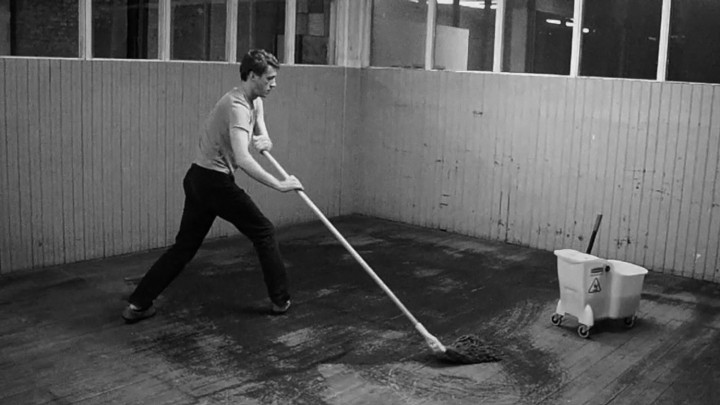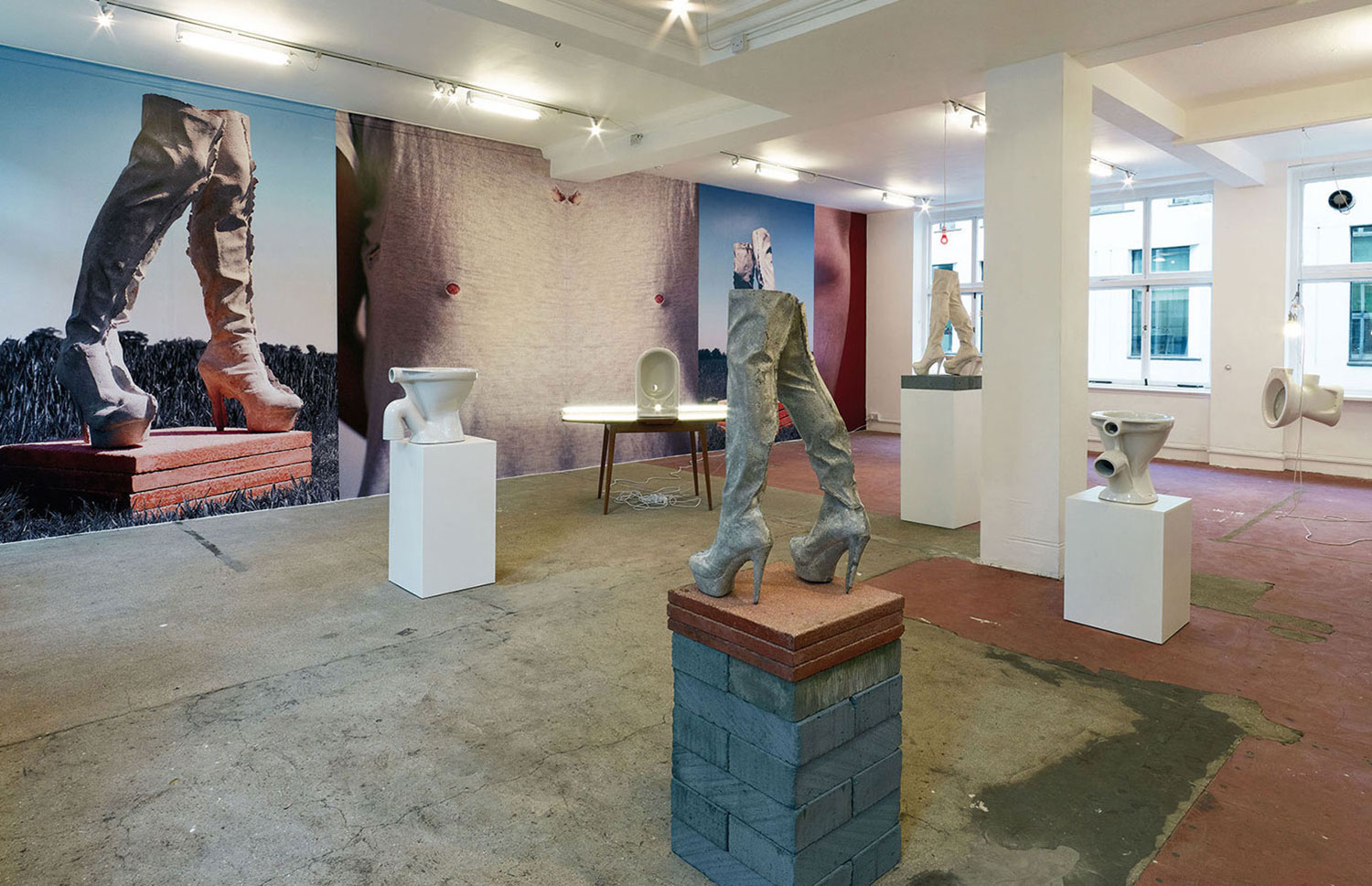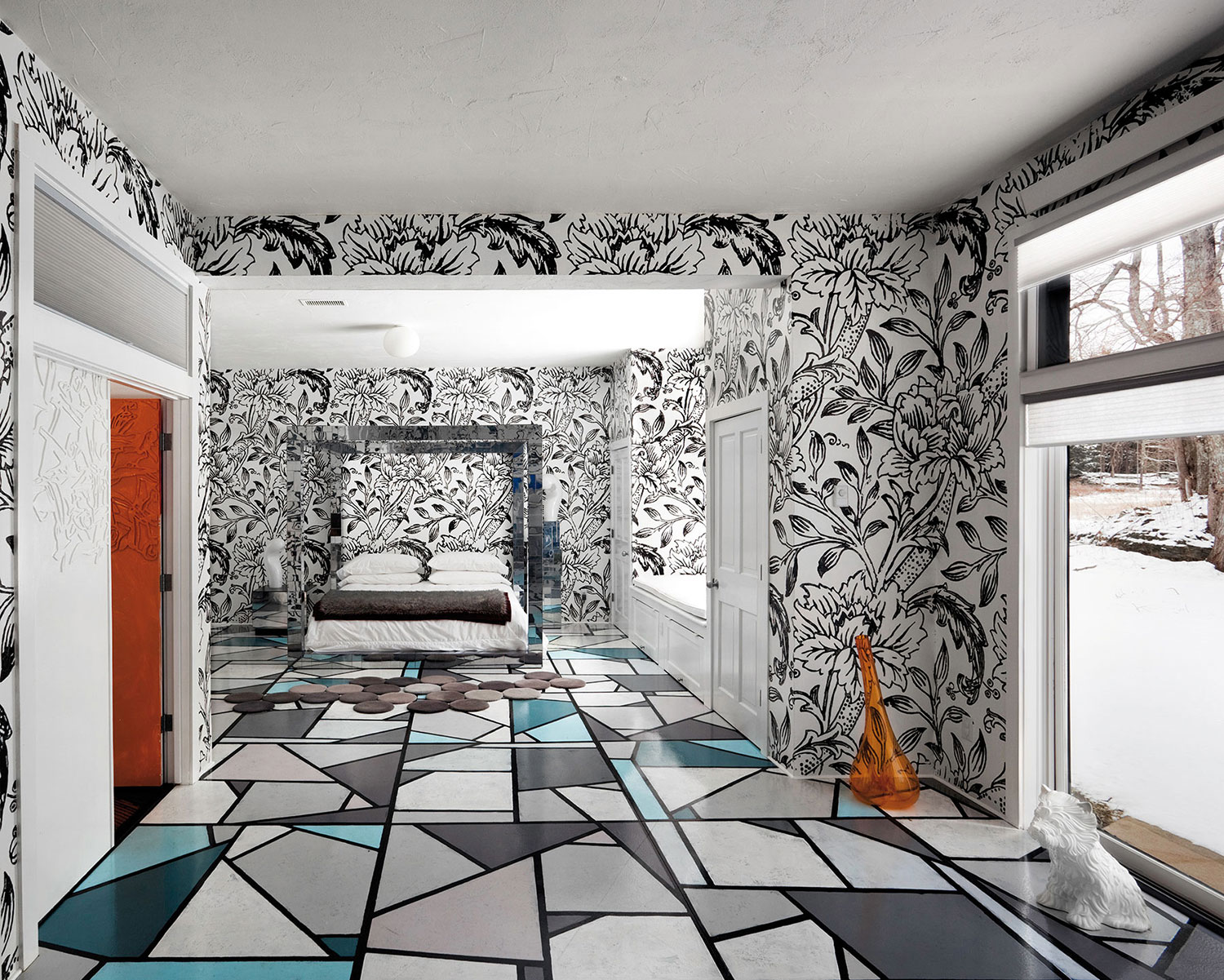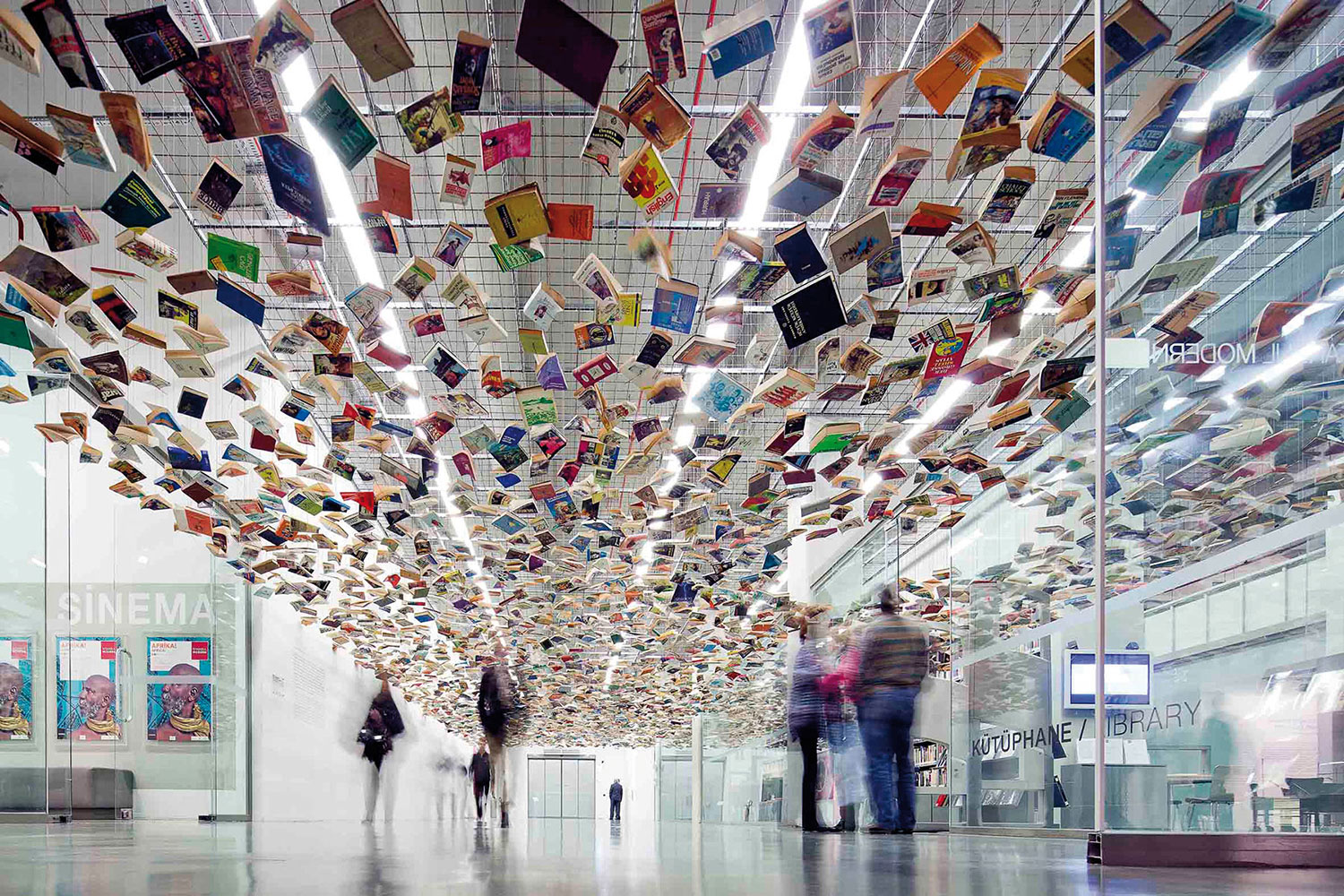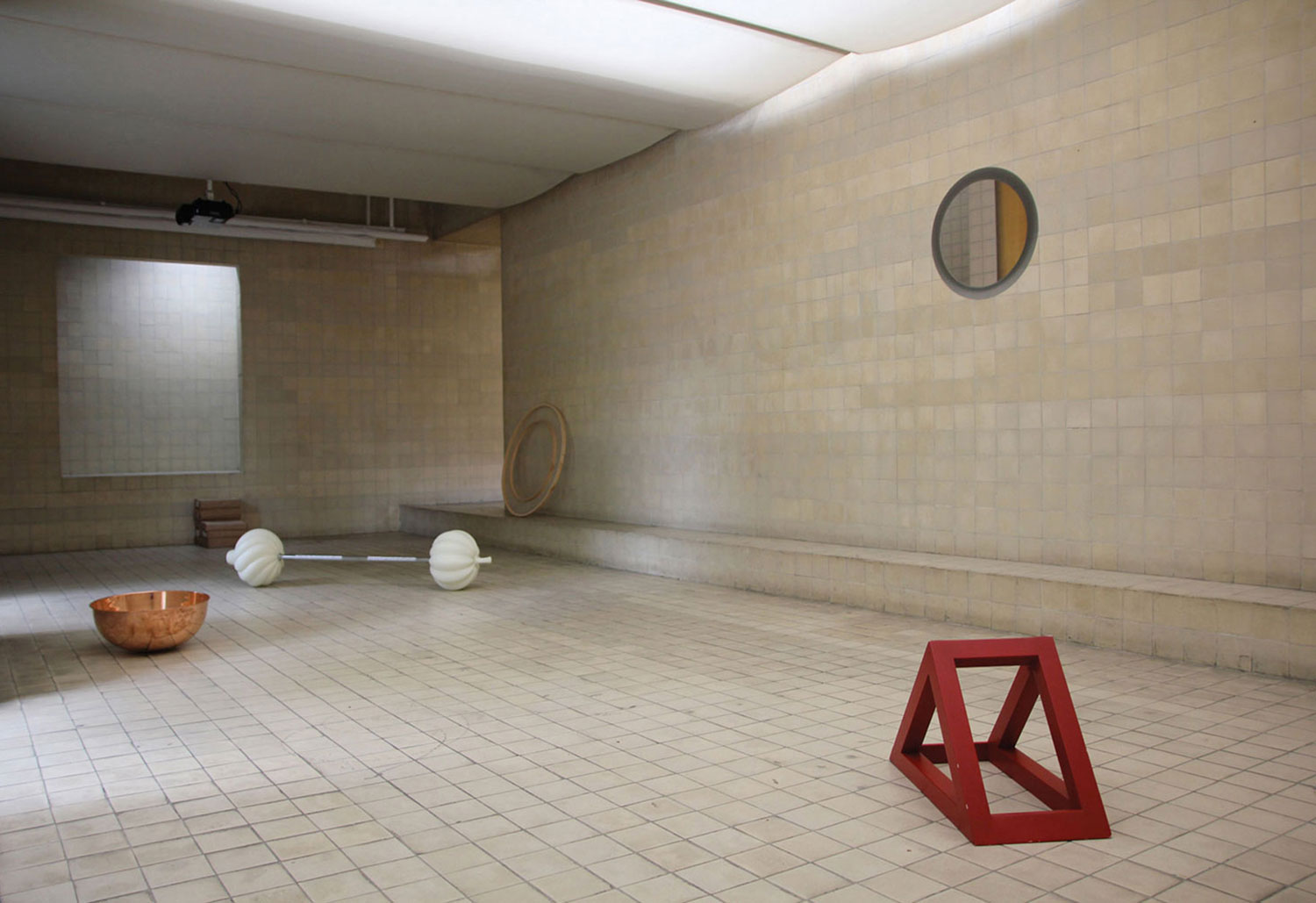
Maurizio Cattelan: Ciao, John. Can you hear me okay?
John Henderson: Yes, I can hear you surprisingly well.
MC: Let’s begin then. You live in Chicago, an unusual place to pursue an artistic career. Have you ever thought of moving to another city?
JH: Yes, of course, I do think of moving. Chicago is nice, though. It doesn’t really matter.
MC: There is not much attention given to Chicago. It could be hard for a young artist…
JH: It’s really not difficult.
MC: Well, let’s talk about your work: I see many references to art history, to other artists and periods, from Abstract Expressionism to Minimalism, for instance. Where does originality lie within the work?
JH: Originality is a slippery thing for me. It is not my end goal, per se, but I would like the work to point to the conditions of originality, hopefully in a way that will encourage the viewer to think critically about the object or image in front of them. I am interested in a rather outdated conception of the painterly gesture, or the “artist’s touch,” as a kind of signifier of originality. However, in my work the original gesture is always seen as a ghost or echo, a shadow…
MC: Like a copy?
JH: Not necessarily. It’s more about translation than replication. For example, I do make actual paintings in the studio, which I labor over, but these are often translated into new materials through processes such as casting or photography. So, the object qualities of the original paintings can be reproduced in metal or flattened into photography. Aspects of the originals are very much present in the final works, but there is always a loss of information inherent to the translation, a distance from the original. They are not copies. They are closer to documentation.
MC: Like a documentation of your own expression?
JH: That sounds close.
MC: Sounds complicated.
JH: I guess it can be.
MC: Have you ever seen a ghost?
JH: No. Have you?

MC: Let’s go back to your use of references…
JH: References are inescapable. But I think that’s okay. They can be productive as a set of leading questions for the viewer, an entrance into the work. Again, it is about translation, though not about regurgitation. There is an obvious gap between my work and the references that I use in my work.
MC: Your 2011 show at T293 in Naples included a new series of works called “Recasts.” These works seem to directly reference the “Casts,” your cast-metal paintings. Are you imitating yourself now?
JH: There is the idea that artists can trap themselves in a signature style, whereby their work may become — unintentionally, one would assume — a parody of itself. It’s definitely a cliché, but the implications of such a position resonate in my research. So, yes, the “Recasts” could be seen as an intentional parody of the “Casts.” They are painted to mimic the metallic surfaces of the “Casts,” but it is just faux finish. The panels in the “Recasts” are each unique paintings, while the “Casts” are sculptural reproductions of unique paintings. This goes back to my slippery relationship to originality. It can be hard to keep track of the fidelity…
MC: Is this a strategy to gain autonomy or freedom from a particular style or methodology?
JH: I am usually working on a variety of projects or series concurrently in the studio, so this hasn’t actually been a big issue for me yet. I tend to hop around a bit. I think the “Recasts” are more a way to force myself to rethink the “Casts” — an alternative take on the painting/sculpture mash-up the “Casts” propose. The sculptural references in the “Recasts” are more contemporaneous, borrowing from the flat seriality of Donald Judd or Carl Andre, pairing the painterly gesture with a kind of modularity or interchangeability. The casting process that the “Casts” co-opt is quite traditional, rather “ye olde,” you could say.
MC: Your studio, a large, industrial loft space, is an important element or protagonist in your videos and photographs. Why are you attached to this place?
JH: If I am performing the role of “the painter,” this studio feels like the proper set.
MC: Right, and you do appear in a number of your pieces, always active and working. How important is self-representation in your practice?
JH: I consider my practice to be grounded in performance. Even when I’m alone in the studio, it’s a mentality that I foster. I am looking over my own shoulder, watching myself as I make the work. Performing painting — grafting historical precedents onto a contemporary position — is a self-conscious impulse. So, imaging myself in the work feels like natural move.

MC: In your video, Cleanings (2010), you act as a choreographed janitor. What’s that about?
JH: The obvious reference is to that great footage of Jackson Pollock painting in his studio with the un-stretched canvas splayed out across the floor. I saw mopping my own studio floor as clearly analogous to the horizontality of Pollock’s painterly expression. However, my gestures render transitory streaks of water that last for only a few hours. The permanence of the painting object is gone in the video, and the studio labor — the performance — becomes subject.
MC: Sure, and I also think of Gene Kelly dancing with those mops and brooms.
JH: Yes, that’s in there too.
MC: Does comedy ever play a part in your work?
JH: I think you may have just discovered it.
MC: So, we’ve established that the performance of the painter at work and the play of historical forms figure greatly into your work. That filters the experience of seeing the work you make through the hand of the artist as a discursive choreographer, if I look at the practice as a whole economy, at least to some degree. But how do you see the remainder — say, the singular painting? What is it doing in your absence?
JH: At times, the discursive tendencies of my practice can begin to frame the individual works as props or stand-ins or representations. However, I am always invested in each work’s autonomy, the ability of these remainders — to borrow your language — to offer engaging visual experiences on their own, apart from the discursive structure of my practice. The individual works are like artifacts, highly aesthetic records of activity.
MC: Hey, John, sorry about the brevity here, but I need to run.
JH: No worries. Ciao, Maurizio.

